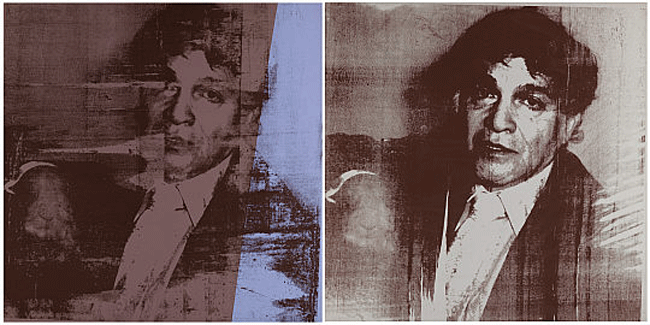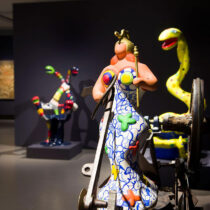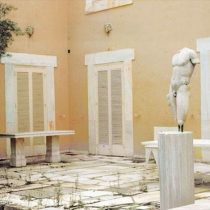Alexander Iolas, art world’s misunderstood wild child “comes back” via New York exhibition and theatrical bio in his legendary villa in Athens.
A citizen of the world, a trendsetter, a visualist and a connoisseur but also an eccentric, an elitist, a perfectionist. A 20th century Icarus who paid his will to “reach the sun” with something more than his life: his legacy. This was Alexander Iolas, probably one of the most influential art patrons who changed international art forever, only to be damned to oblivion by his fellow Greeks (even prominent culture authorities) who were easy to condemn what they did not understand.
His legendary villa, adorned with priceless pieces of art collected from all over the world or donated from Iolas’ famous friends, was literally left to its fate, its treasures having been lost forever. It is pretty sure that of the crowds flocking to view Andy Warhol exhibitions in Athens, during the recent past (in the Byzantine &Christian Museum [2009-2010] and in the National Gallery [1993]) very few would know that it was Iolas who introduced Warhol in the art world, organizing his first gallery exhibition in New York (1952) but also his last one (1987). Art students likely ignore that Iolas was among the first to introduce American audiences to later key movements (such as Surrealism), and he was connected with artists the status of Max Ernst, René Magritte and Man Ray. His dream of creating a hub for young artists in his villa was never materialized, the Greek cultural authorities having accused him, among other things, of illegal antiquity dealing. While he was eventually cleared of all accusations, Iolas will never be a “Great Greek”. In the Nation’s collective memory Eden, where ideas are ranked according to their contribution to an ideal or, even worse, the degree they abide into a framework of a narrow-built set of “ethics”, Iolas was no less than “the forbidden fruit”.
Still, something seems to change in Greece, as Iolas’ reputation seems to get restored. A documentary on him by state TV docu-series “I Michani tou Chronou” (Time Machine), a biography by Nikos Stathoulis and a text by Christos Parides making social media havoc after being published in Greece’s leading free-press, LiFO, were the beginning. There, the late art “Maecenas” is described as a victim of continuous bad press by the ‘80s government-friendly daily “Avriani”, while leading figures of the time but also of the present are shown as as adding to Iolas’ downfall (Melina Mercouri, his one-time friend and Minister of Culture during the 80’s is an example). Last March, New York’s Paul Kasmin Art Gallery recently hosted an exhibition dedicated to him, featuring works by Victor Brauner, Giorgio de Chirico, William N. Copley, Joseph Cornell, Max Ernst, Lucio Fontana, Alain Jacquet, Ray Johnson, Marina Karella, Yves Klein, Les Lalanne, René Magritte, Roberto Matta, Jules Olitski, Man Ray, Martial Raysse, Ed Ruscha, Niki de Saint Phalle, Harold Stevenson, Takis, Dorothea Tanning, Paul Thek, Jean Tinguely, and, of course, Andy Warhol. And, coming back to Greece, Iolas’ villa first opens to the public in order to host a theatrical play based on the life of the man himself! Has the ethical” scale” changed? Have certain parts of our society become more open-minded? Or the present crisis that has affected culture pushes for finding new heroes?
On the 8th of June, 2014 it is the 27th anniversary of Iolas’ death. However, it seems that things are going to be different for the legacy of the man who famously declared he was destined to ”star”. Greek society’s scapegoat of the past has finally become a Phoenix, raising off his ashes to be rediscovered by the generations that shape society’s future.




